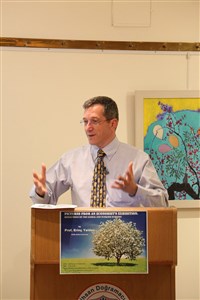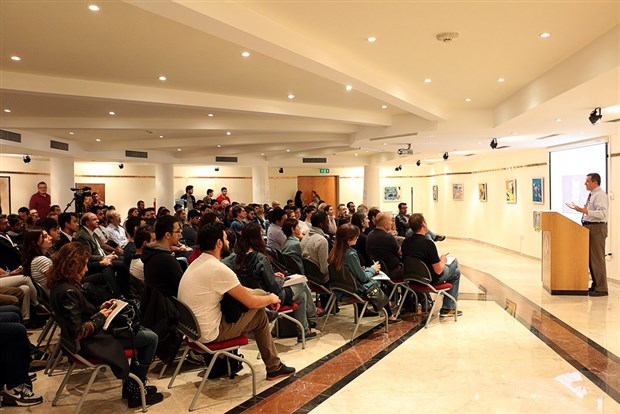BY MIDHAT MERAJ (MAN/II)
The Bilkent Library opened its Library Lunchtime Lecture series for this academic year on October 21 with a lecture by Prof. Erinç Yeldan (ECON), “Pictures from an Economist’s Exhibition: Reflections on the Global and Turkish Economy.” The lecture explored the changes in the Turkish economy since the 1980s with respect to global economic developments.
The lecture commenced with a focus on the year 1980 and its importance in the history of both Turkey and global capitalism. That year marked a crucial transition in the world of capitalism, as world economies shifted more toward mass production for mass consumption along an assembly line and a rapid growth of the financial sector was seen. To illustrate this, Prof. Yeldan presented a graph that showed the trends in profits of the financial versus non-financial sectors in the United States, where a fall in the non-financial sector’s rate of return was compensated for by a rise in the profits of the financial sector. According to the speaker, the main significance of the economic interventions in 1980 was that it led to an objective change in the structure of capitalism as it compensated for the losses in industrial return and replaced key economic terms with more apt substitutes. Examples include the use of “emerging markets” instead of “developing economies,” and a more appropriate use of the words “players” and “agents” to refer to those involved in the economy.
The talk further explored the GDP growth trends in the Turkish economy, which, according to another graph shown during the presentation, appeared to be widely fluctuating around an approximate average of 5% between the years 1950 and 2014. Prof. Yeldan also expounded upon the speculation-led growth in Turkey and its repercussions as foreign financial inflows led to a rise in growth but also resulted in a substantial accumulation of foreign debt. Another concept that was discussed was the notion of Turkey as the “Land of Bel-India,” which highlighted the dualistic structure of the Turkish economy with respect to GDP growth and the education pattern among the Turkish labor force in different parts of the country.
Prof. Yeldan also touched upon the changing patterns in the industrial sector, as recent times marked a more profound decline in the manufacturing industry with a transition toward the tertiary sector. He further commented upon the relationship between a low savings rate and deindustrialization, which leads to deterioration in the state of law and democracy for any given country. The lecture concluded with a final comment on the current economic position of Turkey in connection with the “middle income trap” and the dualities in the Turkish system.


